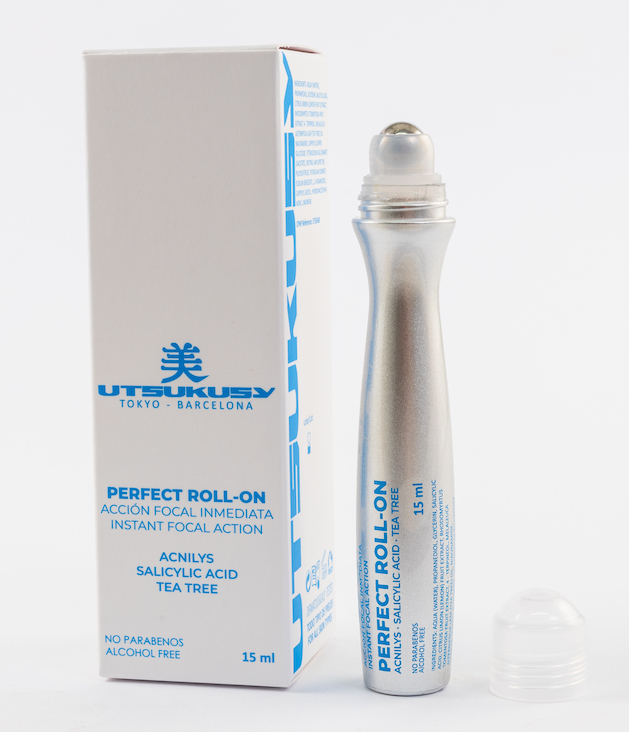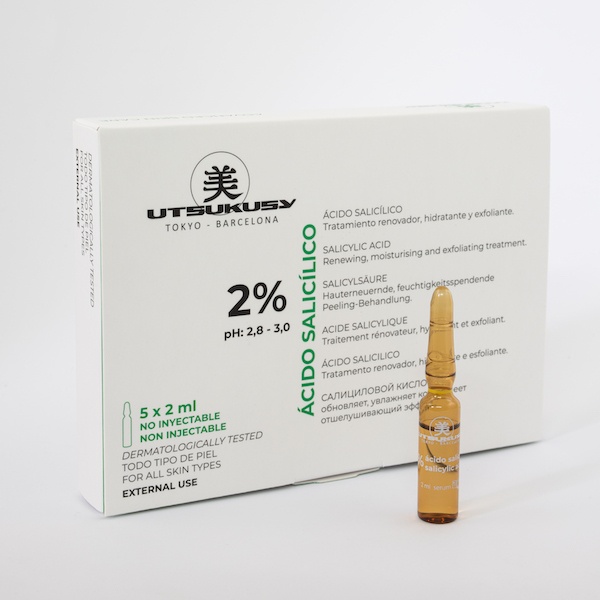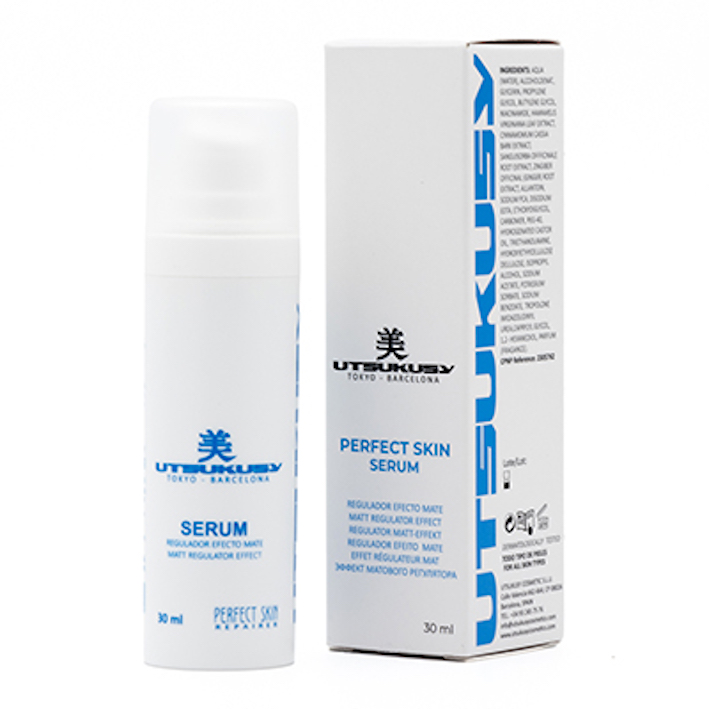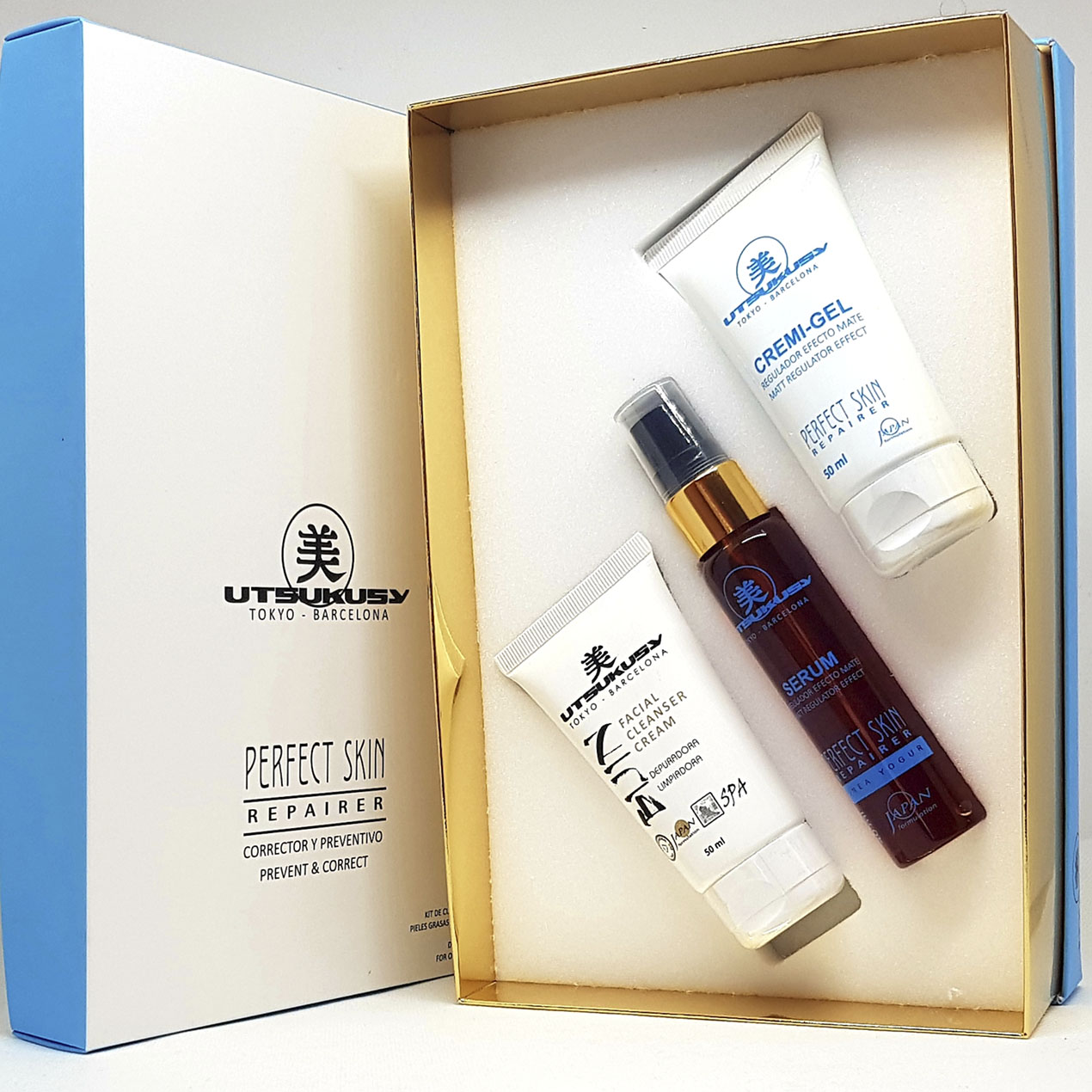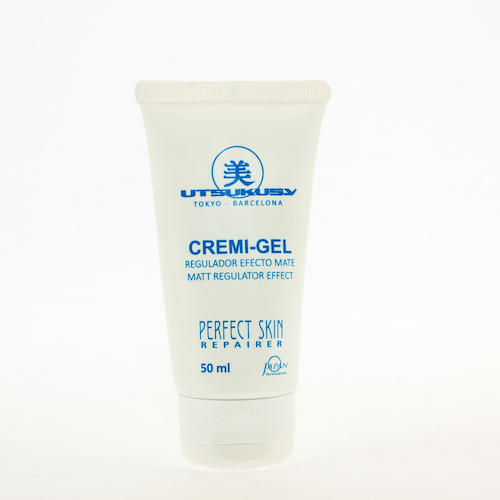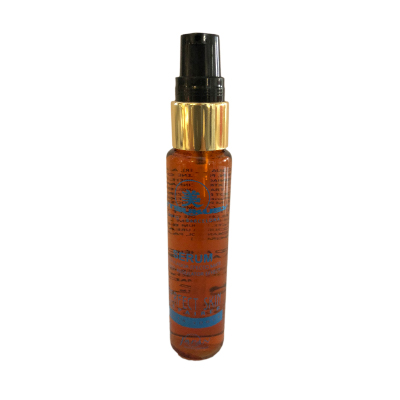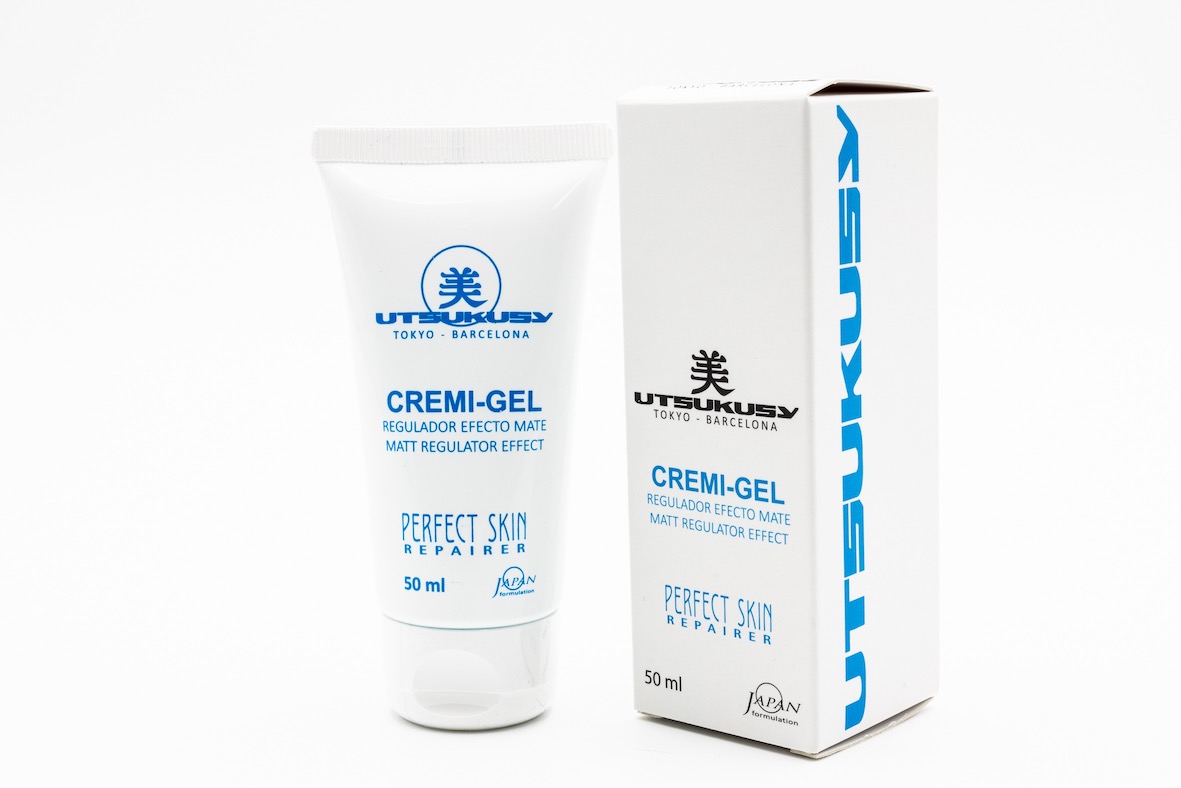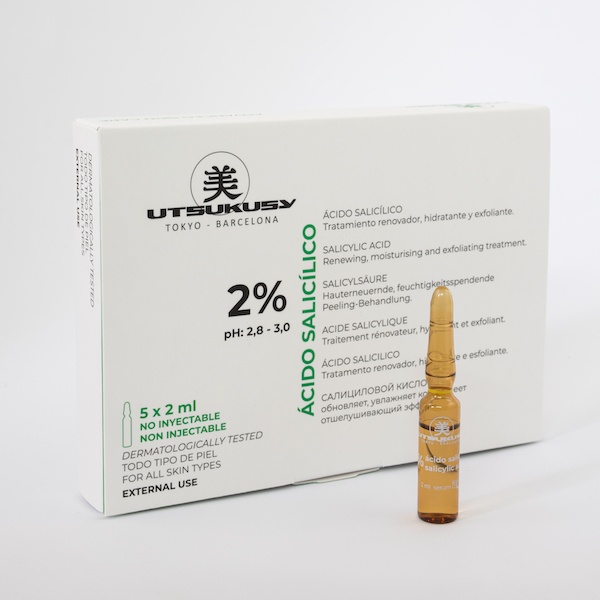Pimples and acne-prone skin
Content: 15 Milliliter (€2,326.67* / 1000 Milliliter)
Content: 30 Milliliter (€199.67* / 100 Milliliter)
Content: 50 Milliliter (€99.80* / 100 Milliliter)
Tired of constantly battling pimples and acne? You are not alone! Many people suffer from oily skin and excessive sebum secretion, which can lead to pimples and acne. But don't worry, there are effective solutions to combat this annoying problem. In this article, we will explain everything you need to know about the causes, treatment options and effective ingredients for cosmetic products for pimples and acne-prone skin.
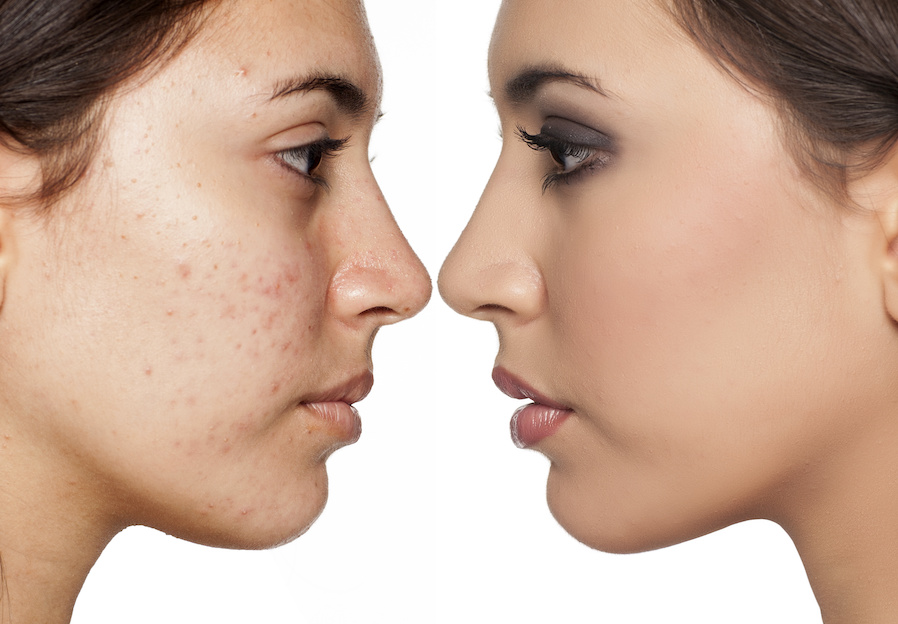
Causes of pimples and acne-prone skin
Pimples and acne-prone skin are common problems that many people face. To treat these skin problems effectively, it is important to understand the underlying causes. Below we will go into detail about the various factors that can cause pimples and acne-prone skin.
Excessive sebum production
One of the main factors that leads to pimples and acne is excessive sebum production. Sebum is a natural substance produced by the sebaceous glands in the skin. Under normal circumstances, sebum helps to protect and moisturise the skin. However, in people with oily skin, the sebaceous glands produce more sebum than necessary, leading to excessive sebum secretion. This excess sebum can clog pores and cause inflammation, which ultimately leads to pimples and acne.
Clogged pores
Clogged pores are a key factor in the development of pimples and acne-prone skin. Pore blockage occurs when dead skin cells, excess sebum and bacteria block the opening of the hair follicles. This leads to a build-up of sebum and a disruption of the normal skin renewal process. The blockage can occur both superficially and deep within the pores and can lead to various types of blemishes, including blackheads, papules and pustules.
a) Blackheads (comedones): Blackheads are small, black or white dots that are visible on the skin. A blackhead occurs when the pore is partially blocked and the sebum comes to the surface of the skin. The black dot is caused by the oxidation of the sebum, while the white dot is formed by a closed pore.
b) Papules: Papules are small, inflamed red bumps that form over the clogged pore. They are often painful and can develop into inflamed pimples. Papules develop when bacteria multiply in the clogged pore and trigger an inflammatory reaction in the skin.
c) Pustules: Pustules are similar to papules, but with a yellowish or white centre surrounded by an inflamed redness. These inflamed pimples develop when the inflammatory reaction in the clogged pore progresses and pus forms.
Bacteria
Bacteria, especially Propionibacterium acnes, play an important role in the development of pimples and acne. These bacteria live naturally on our skin and feed on sebum. However, with excessive sebum production and clogged pores, these bacteria multiply in the hair follicles and contribute to the inflammatory reaction. This leads to red, swollen pimples and acne lesions.
Inflammation
Inflammation plays a crucial role in the development of pimples and acne. When pores are clogged and bacteria are present, the immune system reacts by triggering an inflammatory response. This leads to redness, swelling and the formation of pus-filled pimples.
Genetic predisposition
The predisposition to pimples and acne-prone skin can also be genetic. If your parents or siblings suffer from pimples and acne, it is more likely that you are also prone to developing these skin problems. Genetic predisposition can influence the skin's sensitivity to inflammation and sebum production.
Stress
Stress can have a significant impact on skin health and favour the development of spots and acne. Under stress, the body produces more stress hormones such as cortisol, which can stimulate sebum production. In addition, stress can weaken the immune system and reduce the body's ability to fight inflammation.
Poor dietary habits
Although the relationship between diet and spots/acne is complex, a poor diet can increase the risk of developing skin problems. A diet rich in sugary foods, processed foods and saturated fats can stimulate sebum production and promote inflammation. A balanced diet rich in fruit, vegetables and healthy fats, on the other hand, can help to improve skin health.
By understanding these different causes of spots and acne-prone skin, we can develop more targeted treatment approaches and a more effective skincare routine. It's important to note that the causes of pimples and acne can vary from person to person. For example, some people may be more affected by hormonal changes, while others may suffer more from genetic predisposition. By identifying your specific triggers and causes, you can develop a personalised treatment strategy to best care for your skin and combat pimples and acne.
Treatment options for pimples and acne-prone skin
Fortunately, there are numerous treatment options to effectively combat pimples and acne. Here are some tried and tested methods:
1. skincare routine: a good skincare routine is key to fighting pimples and acne. Cleanse your face twice a day with a mild cleanser to remove excess sebum and dirt. Then use a skin-friendly toner and apply a moisturising cream.
Here you can find suitable facial cleansers such as
2. exfoliation: Regular exfoliation helps to remove dead skin cells and unclog pores. Use a gentle exfoliating product with ingredients such as salicylic acid or fruit acids.
You can find more helpful information on fruit acid peels at www.fruchtsäure-peeling.de
3 Topical treatments: There are many topical treatments that can help control pimples and acne. Ingredients such as acnilys, salicylic acid, niacinamide, benzoyl peroxide, retinol and tea tree oil have been shown to be effective. Products containing these ingredients:
4. professional treatments: For severe acne, it may be wise to see a dermatologist and seek professional treatments. These include chemical peels, microneedling, laser therapy and prescription medication.
Effective ingredients for cosmetic products against pimples and acne
When choosing cosmetic products to treat pimples and acne-prone skin, it is important to look for effective ingredients. Certain ingredients have proven benefits in reducing pimples, controlling sebum secretion and improving skin texture. Below we will discuss some of these ingredients and explain their specific effects.
Salicylic acid
Salicylic acid is a popular ingredient in acne treatment products. It has exfoliating properties and penetrates deep into the pores to remove impurities and dead skin cells. Salicylic acid also helps to reduce excess sebum and clear clogged pores. It has an anti-inflammatory effect and can help to reduce redness and swelling. Salicylic acid is available in different concentrations and should be used according to skin sensitivity and severity of acne.
Acnilys
Acnilys is a phyto-bioactive substance extracted from the berries of myrtle (Myrtus communis). It is a multifunctional active ingredient that acts on various pathways involved in the development of acne. The specific effects of Acnilys include:
1. prevention of hyperseborrhoea: Hyperseborrhoea refers to excessive sebum production, which is a key feature of oily skin and acne. Acnilys can help regulate sebum production and thus reduce the overproduction of sebum. This helps to prevent clogged pores and reduce the risk of pimples and acne.
2. limiting the proliferation of Propionibacterium acnes (Cutibacterium acnes): Propionibacterium acnes, now referred to as Cutibacterium acnes, is a type of bacteria found on the skin that plays an important role in the development of acne. Acnilys has an antimicrobial effect and can limit the proliferation of this bacterium, which can help to reduce inflammation and pimple formation.
3. modulation of inflammation: Inflammation is a major component of acne. Acnilys has anti-inflammatory properties and can help to reduce inflammatory reactions in the skin. This helps to alleviate redness, swelling and blemishes and improve the skin's appearance.
Acnilys is used in the cosmetics industry in various products for the treatment of acne. The use of products containing Acnilys can help to reduce the appearance of spots, regulate sebum production and reduce inflammation.
Benzoyl peroxide
Benzoyl peroxide is another effective ingredient in the treatment of pimples and acne. It has an antibacterial effect and effectively fights the bacteria that cause acne. Benzoyl peroxide also helps to keep the pores free of impurities and has an anti-inflammatory effect. It is available in different concentrations and use should be increased gradually to avoid skin irritation.
Retinoids
Retinoids are derivatives of vitamin A and have been shown to be effective ingredients in the treatment of acne. They work by accelerating skin renewal, removing dead skin cells and promoting collagen production. Retinoids can also help to clear clogged pores and reduce inflammation. However, they can cause skin irritation at first, so they should be introduced gradually and used with caution. Popular forms of retinoids include retinol, adapalene and tretinoin.
Tea tree oil
Tea tree oil is a natural ingredient with strong antibacterial and anti-inflammatory properties. It can help treat acne by fighting bacteria and reducing inflammation. However, tea tree oil can cause skin irritation in some people, so it should be tested on a small area of skin first and diluted with a carrier oil before applying to the face.
Niacinamide
Niacinamide, also known as vitamin B3, is a versatile ingredient that can help treat acne. It has anti-inflammatory properties and can reduce redness and skin irritation. Niacinamide also regulates sebum production, helps maintain a healthy skin barrier and can even help reduce pigmentation and acne scars.
Zinc
Zinc is a mineral that has anti-inflammatory properties and can be supportive in the treatment of acne. It helps to regulate sebum production, inhibit bacterial growth and reduce inflammation. Zinc can be taken topically in the form of creams and lotions or orally in the form of supplements. However, it is important not to exceed the recommended dosage as too much zinc can be harmful.
Alpha-hydroxy acids (AHA)
Alpha hydroxy acids such as glycolic acid and lactic acid have exfoliating properties and help to remove dead skin cells. Regular use of AHAs can make the skin look smoother and more radiant. AHA can also help to clear clogged pores and improve the appearance of acne scars. It is important to introduce AHA products gradually and use sunscreen as they can make the skin more sensitive to UV rays.
Green tea extract
Green tea extract is rich in antioxidants and has anti-inflammatory properties. It can help reduce redness and inflammation and soothe the skin. Green tea extract can also regulate sebum production and clear clogged pores. It is available in various skincare products such as facial cleansers, toners and creams.
It is important to note that the effectiveness of the above ingredients may vary from person to person. It may also take some time for results to become visible. However, if you regularly use products with effective ingredients and follow a consistent skincare routine, you can increase the chances of improving your pimples and acne. For severe cases of acne, it is advisable to consult a dermatologist to receive customised treatment.
Frequently asked questions about pimples and acne-prone skin
Here are some of the most common questions asked on Google about pimples and acne, along with the corresponding answers:
What are the best home remedies for pimples?
There are several home remedies that can help treat pimples, such as tea tree oil, aloe vera, lemon juice and honey. These home remedies can have an anti-inflammatory and antibacterial effect. However, we don't think much of homemade home remedies (hygiene).
How can I get rid of pimples overnight?
It is important to note that pimples do not disappear overnight. However, there are some measures you can take to reduce their visibility. For example, use a topical treatment with benzoyl peroxide or salicylic acid and refrain from squeezing the pimples.
The Perfect Roll-On from Utsukusy Cosmetics also promises quick relief.
What foods should I avoid if I have pimples and acne?
There is no specific diet that works for all people with pimples and acne. However, a healthy diet rich in fruits, vegetables and whole grains can help improve skin health. It is recommended to avoid highly processed foods, sugary snacks and greasy foods.
Can make-up cause spots?
Yes, the wrong choice of make-up can aggravate pimples and acne. Make sure you choose non-comedogenic make-up that does not clog pores or use the tinted day creams from Utsukusy Cosmetics(CC Cream, EE Cream and DD Cream). Remove make-up thoroughly before going to bed to avoid worsening the pimples.
How can I treat acne scars?
There are various treatment options for acne scars, such as chemical peels, microneedling, laser therapy and topical products with ingredients such as retinol and vitamin C. It is advisable to consult a dermatologist to find the best treatment option for you.
What helps quickly against pimples?
There are various methods to treat pimples quickly. Some effective options are the active ingredients Acnilys, tea tree oil and salicylic acid.
All three active ingredients are contained in the Perfect Roll-On from Utsukusy Cosmetics.
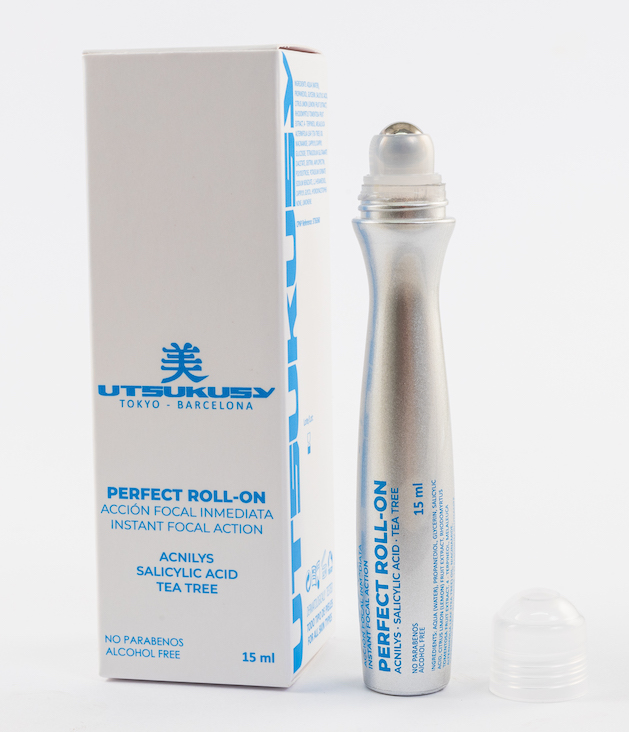
Perfect Roll-On from Utsukusy Cosmetics
Products Products such as the Cremi-Gel Serum and the Cremi-Gel Cream from Utsukusy help you to make pimples disappear quickly. They also mattify the skin and make the oily shine on your skin disappear.
Cremi-Gel Serum from Utsukusy Cosmetics for pimples and acne-prone skin
Cremi-Gel Cream from Utsukusy Cosmetics
Of course, you can also cover your pimples with the tinted day creams from Utsukusy. The tinted day creams also moisturise your skin and the pomegranate extract they contain regulates your sebum secretions.
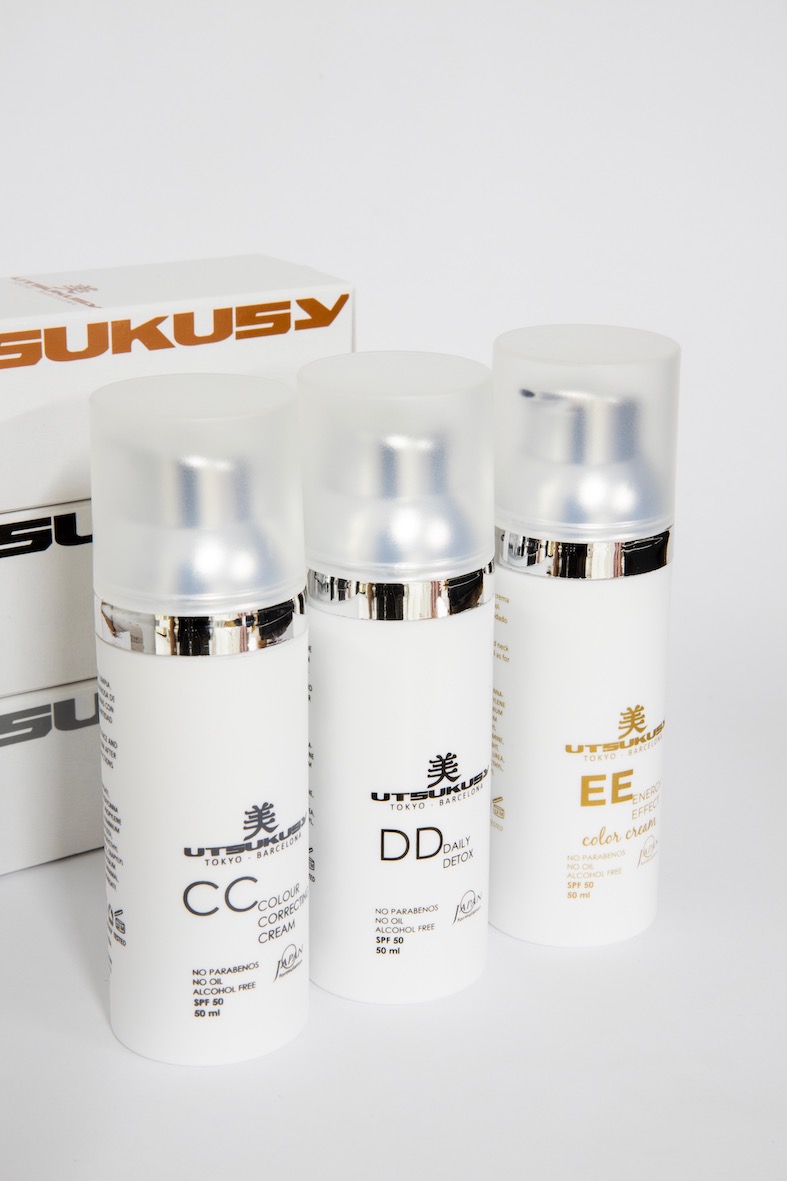
Tinted day creams from Utsukusy Cosmetics
CC Cream = light
EE Cream = medium
DD Cream = dark
What is the best remedy for acne?
The best remedy for acne can vary from person to person as it depends on the individual's skin condition and the severity of the acne. Effective treatment usually involves the use of products with ingredients such as salicylic acid, retinoids or antibiotics (in more severe cases, prescription only). It is advisable to consult a dermatologist for a customised treatment recommendation.
What can you do on pimples overnight?
There are several things you can do to treat pimples overnight. One option is to use products with anti-inflammatory ingredients such as tea tree oil. You can also perform a spot treatment with salicylic acid or another anti-pimple solution. In addition, it is important to cleanse the skin thoroughly before going to bed and not to apply any other irritants or make-up residues to the affected areas.
Why not try the salicylic acid active ingredient ampoules from Utsukusy Cosmetics?
Salicylic acid active ingredient ampoules from Utsukusy Cosmetics
How do I get rid of a large pimple quickly? What is the fastest way to heal pimple wounds?
To treat a large pimple quickly, you can use a combination of different measures. Firstly, you should not squeeze the pimple, as this can lead to further inflammation and possible scarring. Instead, you can use an anti-pimple solution with benzoyl peroxide or salicylic acid to reduce the inflammation. A good skincare routine with products containing anti-inflammatory and healing ingredients can also be helpful. Pimple wounds can heal most quickly if you leave them alone, maintain good hygiene and possibly apply topical treatments such as tea tree oil or aloe vera gel.
What are the most common mistakes when treating pimples and acne?
There are several mistakes that are made when treating pimples and acne. These include using comedogenic make-up which can clog pores, squeezing pimples by yourself which can lead to further inflammation and scarring, touching the face frequently which favours the transfer of bacteria, and cleansing the facial skin too aggressively which can irritate and dry out the skin.
It is important to use gentle and non-comedogenic products, avoid squeezing pimples yourself, cleanse your hands regularly and cleanse your skin with gentle cleansers.
Conclusion
Pimples and acne-prone skin can be frustrating, but with the right care and treatment, it is possible to manage this problem. A consistent skincare routine, the use of products with effective ingredients such as salicylic acid and benzoyl peroxide, and professional treatments if necessary can help reduce pimples and acne. Remember that everyone is individual, so it may take some time to find the right combination of products and treatments for your skin. Be patient and don't give up - you can achieve healthy and radiant skin!

